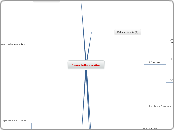by Chan Samuel 13 years ago
1921
Acute Inflammation

by Chan Samuel 13 years ago
1921

Direct Injury
Cytoskeletal reorganization
Formation of endothelial gaps
Increase in hydrostatic pressure due to increased blood flow
Loss of osmotic pressure by protein loss
Leukocytic margination
Peripheral orientation of leukocytes
Incrased viscosity of blood due to concentration of red cells
Outporing of proteins into extravascular tissues
Increased permeability of microvasculature
Increased blood flow
Causes
Redness
Swelling
Heat
Arterioles first, results in operning of new capillary beds
Production of Arachidonic acid metab
Leukotrienes
Prostaglandins
O2 derived active metabolites
Lysosomal enzymes
O2 independent mechanism
Lysozyme increases bacterial permeability
Activation of NADPH oxidase
Converted to HOCl (antimicrobial)
Largely O2 dependent mechanisms
Discharge of granule content into phagosome
Degranulation
Completely enclosed by extension of phagocyte cytoplasm
Triggered by binding of opsonized particle ro receptor
Opsonins
C3b, opsonin fragment of complement protein C3
Fc Fragment of IgG
Most organisms unrecognised till coated by opsonins
Increased no. and avidity of leukocyte adhesion molecules
Activation of Oxidative Burst
Degranulation of lysosomal enzymes
Production of arachidonic acid metabolites
Sequence of chemokine gradients
Attractant receptors the leukocyte expresses
Endogenous
Cytokines
Components of complement pathway
Exogenous
Bacterial products
Eosinophils
Main type in hypersensitivity rxn
Lymphocytes
First to arrive in viral infxn
Neutrophils
predominate in most infections
Type of cell varies with age of inflammatory lesion
Mediated by leukocyte integrins & ligands on endothelial cells
Activation of leukocytes, avidy of integrins to ligands increased
Resulting from interaction between selectins and their ligands
Rapid and relatively loose adhesion
Inflmmatory mediators increase expression of selectins
Leukocyte accumulation along vessel periphery